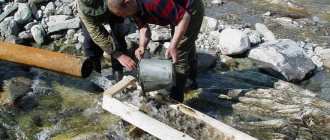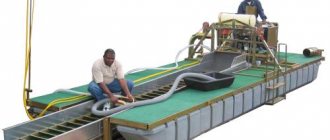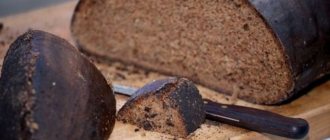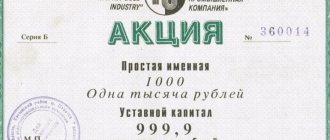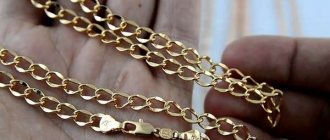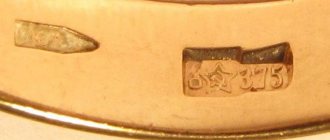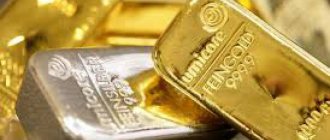Gold, with the exception of platinum, is the most expensive metal on the planet. Its undoubted advantages include plasticity, high specific gravity, resistance to external influences and, of course, excellent solar shine. Gold does not rust and does not dissolve in virtually any known aggressive substances. The metal is rare, but in small quantities it is found everywhere - in the ground, in water, in ash and even in plants. Gold can be mined using both industrial and artisanal methods. Miners most often wash it, of course, in rivers and streams. This procedure is technically simple, but usually very labor-intensive. In this article, we will understand in detail how to wash gold.
Where to look?
Gold is a chemically inert metal. That is, it rarely forms various types of compounds with other substances. Therefore, in nature, gold can most often be found in the form of nuggets. The latter have very different sizes. Small accumulations of gold may not even be visible to the naked eye. Gold sand or small nuggets weighing 1-3 grams are also found in nature. Such valuable "pieces" can be found in many rivers and streams - even where there have never been prospectors. But sometimes in nature you can find very valuable large nuggets - weighing 10 grams or more.
Where can you pan for gold or find it? There are only two main types of such deposits: ore and placer. The huge advantage of the latter is that when developing them there is no need to crush ore and dig deep mines. Placer deposits are formed in rivers due to the washing away of mountain quartz gold-bearing rocks by water. The stream carries pieces of metal from the ground downstream. At turns in a river or stream, or near any obstacles, grains of sand or nuggets stop their movement, gradually accumulating. Such places are called “nests”. This is where miners usually work.
Spiral Enrichment Module (SOM) - erosion of clayey sands
Washing of gold placers with a high content of clay and fine gold
What device should you use to wash whole placers with a high clay content?! How to extract fine gold without losing production volumes? How to cost-effectively recover residual gold from ephelian dumps? These are pressing and, until recently, unsolvable tasks for many artels. Any experienced prospector knows that at this time there was no device that could extract gold from clay placers well! It has long been clear that it is necessary to develop a fundamentally new approach to clay erosion!
The work of our enterprise has solved a painful issue - the erosion of clay deposits. During the 2021 panning season, a full cycle of R&D was carried out to introduce into industrial use a multi-tonnage complex that makes it possible to extract gold from primary placers and ephelian dumps with a high content of clay and fine gold. The module is called the Spiral Enrichment Module , abbreviated as COM .
Spiral Processing Module is a mining machine based on a spiral classifier, the machine works for months without stopping in gold recovery factories. The machine is proven, reliable and highly productive. And the most optimal way to wash clay is “WIPING” IN A DENSE ENVIRONMENT!
The module allows you to process 1,000 m3 per day for ephels and 1,200 – 1,500 m3 per day for solid placers (taking into account the output of the galleys thrown from the hydromonitor table, and therefore not entering directly into the enrichment process).
The Spiral Enrichment Module is based on a standard spiral classifier, but it is significantly smaller, which means it is lighter and more mobile. As is known, spiral classifiers have been used for many decades in the classification of sands, pebbles and sludge - they are reliable, easy to operate and very economical; their favor is supported by the fact that almost 90% of mining and processing plants use these mining machines. The Spiral Enrichment Module inherited ethical qualities - simplicity, reliability, low cost of operation.
A fundamentally new method for extracting placer gold using the Spiral Processing Module allows:
- completely wash away the clay;
— almost completely extract gold, including fine, dusty gold;
The “wiping” method carried out during the operation of the COM makes it possible to process placers with a high content of clay and fine gold. In terms of its technological parameters (clay erosion, fine gold capture), the Spiral Concentrating Module is significantly superior to all devices currently used for placer gold (scrubber butters, PPGSh, etc.) and has no analogues.
Operation of the Spiral Processing Complex.
Extraction of gold from solid placers is possible only after ore preparation - their preliminary erosion in order to free them from binding clays. The more clay, the more difficult the process of gold extraction; the more dispersed the clay, the more difficult it is to erode. Currently, when washing placers containing clay, scrubber cylinders are used. Specialists working on scrubber butars are well aware that scrubber butars do not provide sufficient erosion of difficult-to-wash sands, and clay comes out both into the dump from the heaps and with the sands entering the sluice. Sands with high clay content require a longer erosion cycle to disintegrate. To ensure complete removal of clay, it is necessary to use the “wiping” method, where clayey sands are kept in a dense medium for a sufficiently long time, which guarantees their complete erosion.
Ore preparation.
If we consider in detail and step by step the processes of washing sand on a washing table with a hydromonitor and washing in a scrubber tank, we will literally get the following:
— As a rule, when the hydromonitor table is properly designed, the dirt comes off cleaner than when using a scrubber cylinder. Since the operator-monitor visually controls the erosion process and resets the galley only after it has been thoroughly washed. The pressure of the hydraulic monitor is also much stronger than the pressure of the irrigation jet in the scrubber tank, which also contributes to a more thorough washing of the clay coating from the heap. However, on the table, small particles of clay are eroded worse than in a scrubber drum, since they, falling through the perforations of the table, are immediately fed to the airlock (when the PPGSh operates, this minus is partially offset by a long slurry line and a strong pressure of the jet, lifting the pulp upward).
So:
— a washing table with a hydromonitor washes the grease better from the galls and does not eject large pieces of clay, but it is worse at eroding fine sands and small lumps of clay;
— the scrubber-butara washes out the grease on the galleys worse and does not ensure the erosion of large pieces of clay (many who have worked on scrubber-butaras know that large pieces of clay often come out of the galleys into the dump), but more thoroughly erodes small pieces of clay.
Based on the above and taking into account the ability of the Spiral Concentrator to “wipe” clay, the optimal option for ore preparation of clay placers was chosen - washing out with a hydraulic monitor on a perforated table, which makes it possible to avoid the release of gold with putty and large lumps of clay. And the fine clay that has passed through the perforation of the table is completely eroded by the Spiral Concentrator .
Enrichment:
After being washed away by a hydromonitor, the raw material, which has passed through the perforation of the 30mm table, is fed through a chute into the Spiral Concentrator , where multidirectional movement of the pulp occurs - the spiral pulls the pulp upward, and the force of gravity directs it down to the discharge threshold. The degold-plated product (tails) exits through the drain threshold.
When the pulp moves in different directions, a dense “wiping” environment is created. At the same time, a lump of clay, having got into the Spiral Concentrator, first falls into its bottom part, and only after going a long way up the spiral and rolling through the spiral to the bottom, it approaches the overflow threshold. This time is more than enough to wash away all the binding clays. Degilded tailings come out completely washed, without any lumps of clay.
During the movement of the pulp, not only the process of erosion takes place, but also the process of segregation - the heavier is deposited through the lighter, and in this case, the particle area cannot prevent this in this case, a heavy-medium separation occurs, i.e. separation based solely on particle density. Heavy-medium separation occurs due to the fact that the spiral provides a shear force to the pulp (which exceeds the sum of the force of gravity and the friction force between particles) with a vector directed perpendicular to the downward flow, which leads to the displacement of any flat particle onto its edge. This circumstance prevents even flat particles of gold from leaving the drain - almost 100% of the gold goes to the bottom of the COM!
Shooting rough concentrate:
When removing the concentrate from the Spiral Concentrator, the lower drain pipe opens (at first partially to discharge water, then completely), the concentrate is first from the outer end part, then from the top to the inside, and is washed off with a stream of water into the sump.
So, the cycles of operation of the Spiral Enrichment Module :
— supply of raw materials to the hydromonitor washout using a front-end loader;
— through the slurry line, supply to the Spiral Concentrator ;
— after daily washing, unloading of rough concentrate;
— screening of rough concentrate on a 5mm sieve;
— finishing on the concentration table of the fraction + 5mm;
- enrichment on a Vertical Ultrasonic Concentrator of the fraction - 5mm.
Additional capabilities of the Spiral Enrichment Module developed by us.
When washing sands with a high clay content, some of the gold does not have time to free itself from the clay “jacket,” which leads to it slipping through both deep and shallow filling sluices.
The Spiral Concentrator, installed under the exit of the pulp from the sluice, allows you to catch gold that did not have time to free itself from the clay and passed through the sluice.
In this version, the Spiral Concentrator can be installed on a device with any capacity and incoming fraction; this condition is achieved by a sluice transfer system (included in the equipment package).
Unloading the Concentrator without stopping Prompribor.
Fine gold, flotation tailings from the main enrichment processes of copper, zinc, gold.
At this time, hundreds of millions of tons of waste (tailings) obtained in the process of mining copper, zinc, lead, and gold have been accumulated on the territory of our country. The content of useful metals in the tailings is low, which does not allow them to be processed profitably. But once you find a way to enrich stale tailings, they become cheap and accessible raw materials for use in existing large-tonnage factories.
Enrichment is the most important technological process that allows for the cost-effective processing of poor raw materials. After enrichment, the low-grade waste from the main process (tailings) again becomes a marketable concentrate.
The Spiral Enrichment Module installed directly on the flotation tailings slurry discharge pipe of an operating plant allows for additional extraction of useful components at minimal cost. Two examples of additional gold recovery:
— from stale flotation tailings of the mill;
— from ephelian dumps after washing solid gold placers.
The enrichment results we obtained:
Flotation tailings are made on a small Spiral Concentrator with control gates.
concentrate with Au content obtained, g/t 2229.50
Gold, extracted by us from ephelian dumps of washing solid sands, (performed on an industrial Spiral Processing Module with a capacity of 1000 m3/day) with finishing on a large concentration table:
Fractional composition of gold from ephelian dumps.
| Gold fraction | Yield percentage of total weight |
| +0.56mm | 0,1% |
| -0.56mm +0.25mm | 29,9% |
| -0.25mm | 70% |
| total | 100% |
.
You can order a Spiral Enrichment Module by sending an order through the website or by mail.
How is gold mined in rivers?
Of course, metal located in water or on the shore (when the bed of a river or stream changes) does not lie directly on the surface. Anyone looking for an answer to the question of how to properly wash gold should keep in mind that nuggets in placer deposits are always mixed with stones, sand, clay, and silt.
Actually, in order to remove them, a method such as washing with a tray is used. Gold, as already mentioned, has a high specific gravity. Basalt stones, sandstone and other rocks usually weigh less. Therefore, when washed, they simply drain with water. The gold itself remains at the bottom of the tray.
Prospecting equipment for gold detection
Throughout history, there have been outbreaks of gold rushes due to social, political and economic conditions. In the 70s of the last century, after the collapse of the Bretton Woods agreement and the abolition of backing the dollar with metallic gold, there was a record price increase from 35 to 850 dollars per ounce.
The highest price for the precious metal was recorded in 2011 at $1,920 per weight unit. Therefore, starting from the 70s, under the influence of the factor of increasing the cost of gold abroad, it became fashionable to search for and mine the noble 79th using metal detectors and portable dredges.
Conventional metal detecting equipment has difficulty detecting nuggets. Therefore, to identify the presence of gold, special instruments have been developed for searching for metal, with which you can detect large and small nuggets at a depth of 8 cm to 1 m. The advantage of the equipment is its insensitivity to the ground.
The operating principle of a gold probe is different from a metal detector. It is a probe with a sensor device that reacts to the presence of gold in the soil. To provide a positive signal about the presence of gold, direct contact of the sensitive part of the device with a particle of the noble metal is necessary. With its help, you can determine the presence of signs of gold content.
What to take with you
We’ll talk about how to wash gold in the river below. First, let's figure out what is needed for this procedure. Of course, first of all, a prospector who decides to get nuggets will need to take a tray with him. In addition, you will need a pipette and several containers for the gold itself. Nuggets are often very small in size and it is difficult to pick them up simply with your fingers. This is what you need a pipette for. For storing very small grains of sand, for example, a regular medical bottle is suitable. Large nuggets, of course, can be placed in any container.
You should also definitely take a sieve with you. You can make it by cutting a plastic bucket about halfway and making a lot of holes in its bottom. After all, rivers often contain not only sand, but also large stones. A sieve is necessary in order to sift them out. You will also need a small shovel to scoop up soil. Sometimes a prospector also needs a paddle to agitate, for example, heavy clay rock.
And of course, a person who decides to find gold should definitely wear rubber boots. Two pairs of gloves will also come in handy. Rubber ones will protect your hands from getting wet. Under them you should wear regular household gloves with pimples. The water in the river can be warm. But in the stream it will probably be very cold.
Types of dredges for gold mining and principles of their operation
The units that became the topic of our conversation come in two types: continental and marine. The design of both types is almost the same: a floating vessel, masts, equipment for scooping rock, a device for maneuvers, equipment for enrichment. The main difference lies perhaps in the absence of stalkers and piles in marine dredge models.
Continental dredge models are used to study and develop deposits on the mainland adjacent to a body of water. Such devices are based on pontoons. Marine models are used for gold mining, as well as for the extraction of all kinds of minerals and diamonds. Similar equipment is installed on ships, not only on towed ones, but also on self-propelled ones.
Important
Mini-dredges for gold mining have become very popular today.
In appearance, the device resembles a vacuum cleaner that sucks up sand mixed with ore and then separates it. The weight of such equipment varies from 24 to 90 kg, design features may be different, the following components and assemblies are the same:
- system providing buoyancy;
- a motor that drives a centrifugal pump;
- a chute designed for washing and separating rock;
- injector;
- air supply system (only on some models).
Speaking about the principle of operation of a dredge for gold mining, it is necessary to mention the following: a stream of water under enormous pressure is supplied to the injector. Rock (pebbles, sand, etc.) is drawn into it along with water and directed to the grid of the rinsing chute. The motor drives a pump that helps sift the gold from sand and debris.
How to wash gold: technology
Actually, the procedure for extracting nuggets from river soil is not complicated. Large stones are removed first:
- the sieve is installed on top of the tray;
- a shovel is used to scoop up soil from a river or stream;
- the mass is poured into a sieve and sifted;
- Water is poured into the sieve from above in order to wash the remaining particles of soil down from the stones;
- the sieve with stones is removed from the tray.
Next comes the actual washing itself. In order for things to move faster, experienced miners recommend performing this procedure on a small current. The answer to the question of how to wash gold looks something like this:
- the tray with gold-bearing soil is carefully lowered into the water;
- make movements left and right until the turbidity dissolves;
- begin to perform circular movements, sifting out the sand.
Continue this procedure until all the soil is washed out. Next, carefully inspect the bottom of the tray. Nuggets weighing two to three grams are clearly visible to the naked eye. However, the remaining soil may contain very small grains of sand. It is important not to miss them.
What is a tray? Why do you need a magnet?
A prospecting tray is a trough, a basin with low sides. There are few requirements for it: it should not sink, but should be durable and light.
The material can be very different. The ancient Greeks used skins for this purpose. There are still trays made of wood, mostly linden. Such trays are not painted, leaving a rough wood structure. Often the tool is made of metal or steel. The simplest option is plastic.
The shape can be round or elongated in the form of a trough. People learn to work with such a tray from childhood.
The color of the material is dark so that light grains of precious metal can be seen on it.
The miner's bag should have a magnet to remove metallized ore from the sand and a bulb bottle, which will be needed at the final stage of washing.
How to stroke
This procedure on clay soils is performed after sifting out large stones. To agitate, the paddle is first immersed in the bow of the tray. Then it rises along the bottom to the top. This should be done so that the soil with clay and silt rolls down into the middle part of the tray. The stroke movements should be repeated quickly - about once per second. As a result, silt and clay will come into suspension, heavy particles will sink, and pebbles will be forced to the top. You should continue to work with the stroke until the water stops becoming cloudy.
At the final stage, you need to pull the tray out of the water and remove the pebbles on top. Then you can start washing the remaining sand.
How to mine gold sand by dredging
The process of washing sand with a dredge:
- The soil, which potentially contains particles of precious metal, is placed in the receiving hole.
- The installation washes the soil, removing excess fractions from it. The latest models of profile equipment are equipped with an automatic flushing function for coarse rock, which eliminates the risk of damage to the device.
- The washed soil is fed into a drum, where it is wetted and crushed into smaller parts.
- The next stage is that the soil is sent to the enrichment sluice, and then the remaining raw materials, which are guaranteed to contain nothing valuable, are thrown back.
The functionality of the dredge for sand extraction provides the ability to make individual settings, in particular:
- intensity of rock cleaning;
- fuel consumption;
- drum rotation speed;
- cleaning method (depending on soil type).
What types of trays are there?
We found out how to wash gold by hand. Now let's talk in more detail about what the equipment necessary for this procedure is, and in particular the tray. There are several types of such devices used by miners for washing:
- Asian ladles and basins. Such utensils are sometimes used by prospectors in the Urals. The disadvantages of such equipment include small volume, uneven discharge stream, and the possibility of losing small nuggets due to the small side. When using such a tray, a paddle cannot be used.
- Trays of Chinese and Korean type. Such devices are quite convenient to wash. However, they are expensive. It is difficult to make such a tray yourself. This type of equipment is made from one piece of raw thick wood (without branches or cracks) by hollowing out the middle.
- Yakut trays. Such devices are made from both sheet iron and plank. They are the ones most often used by private miners. Wooden trays are more suitable for rough washing in rich deposits. On metal, you can notice even the smallest grains of sand.
Tray and shovel - miner's weapons
Through temporary labor agreements with licensed miners, or other semi-legal schemes, miners today pan for gold by hand, just as their counterparts did in American films years ago.
The use of any equipment that facilitates this work is prohibited. All that artisans can use is a tray and a shovel, and sometimes a metal detector. In addition, they often work in such remote and hard-to-reach places that no equipment simply can get there.
How to make a metal tray: practical recommendations
It is clear how to wash gold in streams in this way. An ordinary person who decides to find nuggets in the surrounding area should take a metal tray with him. Sheet iron is well suited for the manufacture of such a device:
- 0.8 mm for small trays;
- 1 mm - for medium ones;
- 1.2 mm - for large ones.
For work in water, it is best to use galvanized metal. Firstly, it will not rust over time, and secondly, golden grains of sand will be more visible on a light zinc surface. The metal should be cut according to the diagram (can be seen below).
This procedure is performed like this:
- the outlines of the pieces are drawn on the sheet;
- cutting is carried out;
- Bend lines are drawn on each cut piece;
- the sheet is bent to give the tray the appropriate shape;
- sharp corners are rounded with scissors;
- a wire 6-8 mm thick is rolled along the edge of the tray;
- Handle rings are riveted along the sides on both sides.
When making a tray from metal (as well as from wood), you should keep in mind that the angle between both of its planes should be 140 degrees.
Fashionable matte products
This type of jewelry is becoming increasingly popular. But caring for them is more troublesome, because it is not recommended to use hard brushes or abrasive powders to clean such products. Therefore, professional options for cleaning gold at home are most often used. For example, using ultrasonic baths or special jewelry solutions. However, you can try other methods. These same methods work great for gold-plated jewelry.
Ammonia soaking
Peculiarity. Ammonia is safe for matte gold and can remove blackness from the surface.
What you will need:
- 10% ammonia - 50 ml;
- dry soft rags.
Sequencing
- Place the product in an ammonia solution.
- Leave for several hours.
- After rinse, dry with a cloth.
Salt-soda mixture with lime
Peculiarity. Baking soda and salt are gentle not only on gold items. They are safe, for example, for both silver and copper.
What you will need:
- bleach – one teaspoon;
- water – two teaspoons;
- a pinch of soda;
- salt on the tip of a knife.
Sequencing
- Combine all ingredients, knead well, set aside for two days.
- Dip the bracelet or chain into the resulting mixture for one to two hours.
- Afterwards, wash the product thoroughly and pat dry with a cloth.
Is it possible to wash gold in the river: what does the law say?
Unfortunately, it is prohibited to walk freely and look for nuggets in our country. In principle, everyone can pan for gold in Russia. However, this type of activity must be properly formalized. Unfortunately, gold mining licenses are not sold freely in our country. But if you wish, you can enter into an agreement with an enterprise that has a similar document.
Unfortunately, there are not too many gold mining companies in Russia and their area of activity is limited. Perhaps someday the government will allow free mining (as was the case, for example, in the USSR). But at present, it is not worth walking with a tray along streams and rivers just like that, without a permit. If gold is found from a prospector without a contract, he faces a large fine.
Top 10 Russian rivers rich in gold reserves
The Golden Ten watercourses, where there are a lot of reserves and it’s profitable to wash:
- Alekseevsky stream (Kamchatka),
- Bodaibo River (Irkutsk region),
- tributary Bolshoy Chanchik (ibid.),
- Bom River (Amur region),
- Jalon stream (ibid.),
- Lena River and its basin,
- Millionny stream (Amur region),
- Unakha River (ibid.),
- Sanarka River (Chelyabinsk region),
- Talga River (Khabarovsk Territory),
At Bodaibo and Millionnoye they wash the rock and extract the largest gold particles. Nuggets are also found in these and other watercourses.
Several methods for extracting yellow metal
The main share of gold is mined using two methods - sand washing with a stream of water and mining in mines.
Artisanal gold mining is carried out in those places where mining has already been carried out using industrial methods and when the latter have become unprofitable, artisanal mining can give good results from the remnants of the former “luxury”. Basically, gold is mined by people from developing countries, whose financial situation pushes citizens to seek alternative income. In Africa, Asia, and South America, more than 10 million people mine gold in their free time. They take risks to help their family make ends meet. This method of gold mining is easily accessible to uninitiated people. To imagine how gold is mined independently using an artisanal method, you can watch thematic videos filmed by numerous hunters for the yellow metal.
Artisanal gold mining in Africa provides livelihoods to millions of people.
Gold deposits formed due to volcanic activity are quite important for gold mining. Such deposits lie close to the earth's surface. Among them are Khakanja in the Far East, Kuranahanskoe in Aldan and many others. Gold is also mined from pyrite-polymetallic deposits of Rudny Altai, magmatic copper-nickel deposits located in the north of the Krasnoyarsk region, and gold-bearing skarns, which are located in Olkhovka and Chibizhka at the junction of the Minusinsk Basin and the Eastern Sayan.
Primary deposits are inferior to placer deposits in many respects. THE MAIN advantage of alluvial deposits is that their development requires much less money.
These deposits are conducive to gold mining being carried out “the old fashioned way” - by hand. That is why, in the Soviet years, the state actively developed alluvial deposits, putting the indigenous ones “on the far shelf.” The decrease in the intensity of alluvial gold mining, which has been occurring in recent years, can increase the growth of unemployment in Siberia and the Far East, which could provoke an outflow of population from these parts of the country.
The technology of washing gold particles in a tray has been known for a long time.
Gold miners use the time-tested technology of washing precious metal particles in a tray. This technology has come to this day from ancient times, when washing was done using sheep skins. It happens that rains can wash gold into the river. Miners are hunting for such “consequences” of the elements.
One of the most grueling and difficult methods is digging out (presumably) gold-bearing rock with a shovel. Since in this case the coveted gold is mined only by hand, all the work consists of the following: a small amount of rock is dug out, then washed in a small tray. Heavy, unwanted metals are ground down to sand, then washed again. Then the most grueling part is the careful selection of gold particles, which is done manually.
Non-industrial methods for extracting precious metal from ore
There are several ways to mine gold without using industrial equipment:
- Mercury amalgamation;
- Cyanidation and flotation;
- Chlorination.
The first method involves the amalgation of sand with a gold fraction not exceeding one millimeter in size. The technology is quite simple: the metal is dissolved in mercury to form an amalgam. It is then separated from the rock by straining through a fine-mesh cloth. In the resulting alloy, gold makes up about half of the total mass. To separate it, the mercury is evaporated.
Mercury amalgamation was known and widely used in the Middle Ages.
The second method includes leaching, concentration and a purification step. The precious metal is leached due to the interaction of cyanide with oxygen, then the concentrate is removed using activated carbon, filtration and calcination.
Cyanidation allows you to obtain a purer metal than with amalgation.
The disadvantage of this method is the high danger of cyanide vapor. Cyanidation is essentially a hydrometallurgical process. In the first years of using this method, only potassium cyanide was used; later, calcium cyanide became widespread. As this type of gold mining developed, it became clear that fine grinding gives better results than the previously used coarse grinding of ores. To grind various ores, tube and ball mills are used, which operate on closed classifiers. Nowadays combined air-mechanical agitators are used.
Scheme for extracting gold from ore using cyanidation and flotation.
The third method involves the use of hydrochloric acid and chlorine, which can dissolve gold. After this, the gold is sifted out from the harder inclusions and fused into an ingot.
